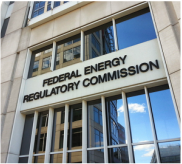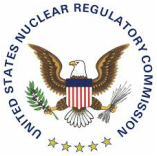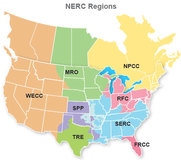Resilient Societies takes the initiative with executive branch officials, legislators, and regulators to improve critical infrastructure protection.
We promote critical infrastructure protection principally through contacts with the executive branch and regulators at independent commissions of the federal government. Other government venues include state legislatures, public utility commissions, and the U.S. Congress. We advocate protective action for our top priorities: solar geomagnetic storms, electromagnetic pulse, coordinated physical attack, and cyber-threats.
As forums for our regulatory initiatives, we use electric reliability dockets at Federal Energy Regulatory Commission and Petitions for Rulemaking at the U.S. Nuclear Regulatory Commission. As an adjunct activity, we participate in standard-settings for electric grid reliability at trade associations and other industry bodies, including the North American Electric Reliability Corporation (NERC) and the Institute of Electrical and Electronics Engineers (IEEE).
As forums for our regulatory initiatives, we use electric reliability dockets at Federal Energy Regulatory Commission and Petitions for Rulemaking at the U.S. Nuclear Regulatory Commission. As an adjunct activity, we participate in standard-settings for electric grid reliability at trade associations and other industry bodies, including the North American Electric Reliability Corporation (NERC) and the Institute of Electrical and Electronics Engineers (IEEE).
The White House and Executive Agencies
Executive branch action can be a more expeditious route for critical infrastructure protection than legislative approaches. America urgently needs emergency planning at the federal level for solar geomagnetic storms, high altitude electromagnetic pulse, and coordinated physical attack on electric grid facilities. Unfortunately, none of the 15 National Planning Scenarios used by federal, state, and local governments cover these threats.
As part of revisions to the National Planning Frameworks for Presidential Policy Directive-8: National Preparedness, we provided comments to the Federal Emergency Management Agency (FEMA). Importantly, we advocated adding National Planning Scenarios for solar storms and high altitude electromagnetic pulse, two high-impact threats for which there is inadequate federal planning. Additionally, Resilient Societies provided comments to the White House Office of Science and Technology Policy on the draft National Space Weather Strategy. We advocated explicit emergency planning for solar storms and advocated resiliency measures for the nation's space weather forecasting system.
In June 2013, our directors authored a private communication to President Obama and key agency heads with the subject line "Government Emergency Actions on Electromagnetic Pulse Threats." The U.S. Nuclear Regulatory Commission published our letter on its website at http://pbadupws.nrc.gov/docs/ML1318/ML13183A027.pdf. Subsequently, we publicly released our Letter to the President; you can download the our color version of the letter by clicking here.
As part of revisions to the National Planning Frameworks for Presidential Policy Directive-8: National Preparedness, we provided comments to the Federal Emergency Management Agency (FEMA). Importantly, we advocated adding National Planning Scenarios for solar storms and high altitude electromagnetic pulse, two high-impact threats for which there is inadequate federal planning. Additionally, Resilient Societies provided comments to the White House Office of Science and Technology Policy on the draft National Space Weather Strategy. We advocated explicit emergency planning for solar storms and advocated resiliency measures for the nation's space weather forecasting system.
In June 2013, our directors authored a private communication to President Obama and key agency heads with the subject line "Government Emergency Actions on Electromagnetic Pulse Threats." The U.S. Nuclear Regulatory Commission published our letter on its website at http://pbadupws.nrc.gov/docs/ML1318/ML13183A027.pdf. Subsequently, we publicly released our Letter to the President; you can download the our color version of the letter by clicking here.
Legislative Bodies
While Resilient Societies does not lobby for specific legislation, we provide policy advice to legislative bodies on realizable and cost-effective infrastructure protections. We have testified before multiple state legislatures on solar storm protection, electromagnetic pulse, and physical security. In advance of oversight hearings in the U.S. Congress, we provide suggested questions and Statements for the Record.
Resilient Societies analyzes composition of congressional oversight committees in the context of constituent needs. For example, in 2014 we performed an analysis to determine which geographic areas are most vulnerable to long-term electric grid outage. We found that states and associated regions at high risk for outages include California and Nevada; Mississippi; Florida; the Mid-Atlantic region of Virginia, Maryland, Washington D.C., Delaware, New Jersey, and New York; and the New England states of Massachusetts and Rhode Island. Surprisingly, we also determined that the oversight committee in the U.S. Congress for electric grid reliability, the Senate Energy Committee, had only one member from a "high-risk" state (Nevada). In advance of committee reassignments after the 2014 fall election, by letter we contacted senators from high-risk states, explaining why membership on the Senate Energy Committee is vitally important for their constituents. Several senate offices got back in touch with us. When committee assignments were announced in December, we were pleased to see Massachusetts represented on the Senate Energy Committee.
In May 2015, we provided analysis to the House Oversight and Government Reform Committee of the U.S. Congress on the Economics of Electromagnetic Pulse Protection. We were the first public interest group to formulate low-range and high-range cost estimates for protection of the U.S. electric grid and interdependent infrastructures against electromagnetic pulse.
Resilient Societies analyzes composition of congressional oversight committees in the context of constituent needs. For example, in 2014 we performed an analysis to determine which geographic areas are most vulnerable to long-term electric grid outage. We found that states and associated regions at high risk for outages include California and Nevada; Mississippi; Florida; the Mid-Atlantic region of Virginia, Maryland, Washington D.C., Delaware, New Jersey, and New York; and the New England states of Massachusetts and Rhode Island. Surprisingly, we also determined that the oversight committee in the U.S. Congress for electric grid reliability, the Senate Energy Committee, had only one member from a "high-risk" state (Nevada). In advance of committee reassignments after the 2014 fall election, by letter we contacted senators from high-risk states, explaining why membership on the Senate Energy Committee is vitally important for their constituents. Several senate offices got back in touch with us. When committee assignments were announced in December, we were pleased to see Massachusetts represented on the Senate Energy Committee.
In May 2015, we provided analysis to the House Oversight and Government Reform Committee of the U.S. Congress on the Economics of Electromagnetic Pulse Protection. We were the first public interest group to formulate low-range and high-range cost estimates for protection of the U.S. electric grid and interdependent infrastructures against electromagnetic pulse.
Federal Rulemaking at Independent Commissions
At the federal level, infrastructure regulations are set through public comment processes legislated under the Administrative Procedure Act of 1946. Public participants make comments on rulemaking "dockets," much as plaintiffs would file legal briefs in court actions. Formulating regulatory proposals for infrastructure protection requires a highly specialized skill set that includes engineering, scientific, economic, and legal expertise. Due to the complexity of the process, most rulemaking participants are commercial enterprises with substantial legal and technical resources. Lack of public participation often results in "unbalanced dockets" that emphasize industry interests but shortchange public priorities.
For some important rulemaking actions on infrastructure protection, Resilient Societies has been the only public interest group to file comments on the docket. For example, during rulemaking for electric grid physical security at the Federal Energy Regulatory Commission, Resilient Societies was the only public interest group to advocate for stronger protection of control rooms, generation facilities, and transmission substations against coordinated terrorist attack.
For some important rulemaking actions on infrastructure protection, Resilient Societies has been the only public interest group to file comments on the docket. For example, during rulemaking for electric grid physical security at the Federal Energy Regulatory Commission, Resilient Societies was the only public interest group to advocate for stronger protection of control rooms, generation facilities, and transmission substations against coordinated terrorist attack.
Industry Standard-Setting
Most standards for critical infrastructure protection are set not by government, but by trade associations or other industry bodies certified by the American National Standards Institute (ANSI). Industry bodies often set weak standards that protect commercial enterprises from legal liability, but do not necessarily protect the public from infrastructure failure. Under federal law, certified industry standards are given deference in federal rulemaking. Therefore, it is especially important for groups such as Resilient Societies to bring forth cogent scientific and engineering arguments early in the standard-setting process. Participation in industry standard-setting preserves our legal rights in subsequent federal rulemakings that approve standards.
Docket Filings, Testimony, and Standard-Setting Comments
For more detailed information about our regulatory initiatives, you can access compilations of our docket filings, testimony, and standard-setting comments at the below links:




